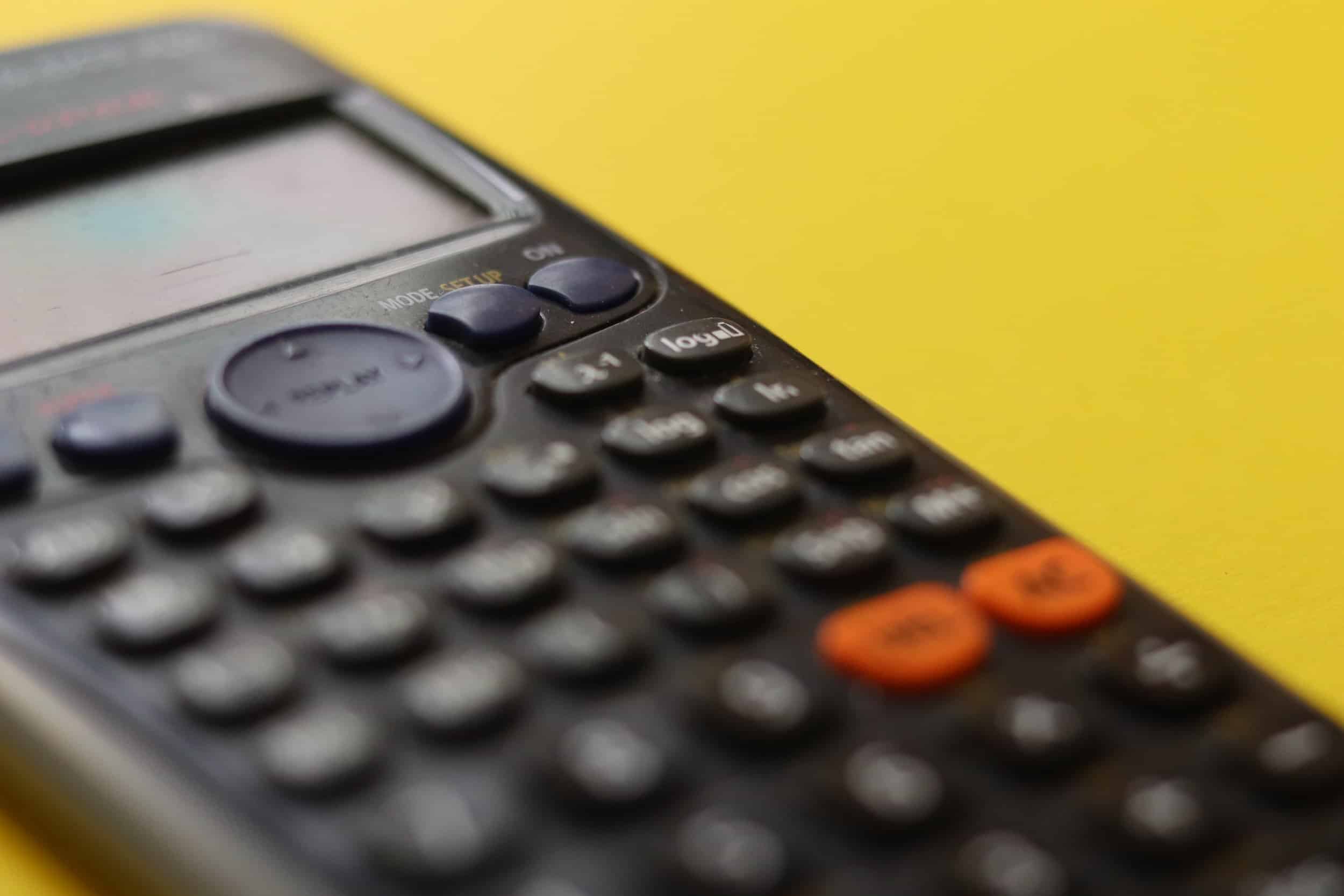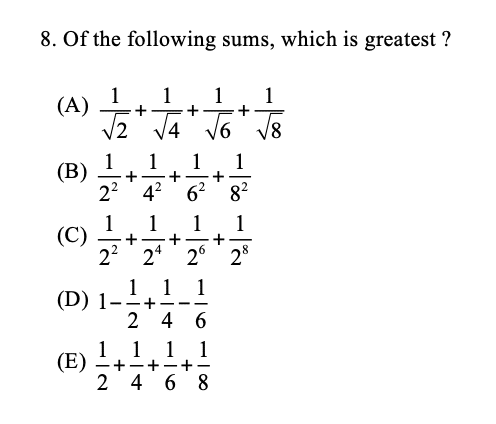
Tips for Increasing Your GMAT & EA Quant Score
UPDATED FOR THE NEW GMAT IN 2024
If you’ve struggled with the GMAT or Executive Assessment quant section more than you think you should, this article is for you. If you’ve ever said, “I’ve always been a really good math student, but I can’t understand why the GMAT or EA quant is so hard for me!” – then this article is definitely for you.
In my former life as a Ph.D. student, I spent far too much time learning about the statistical science underneath standardized testing, known as psychometrics. My nearly three-year Ph.D. odyssey didn’t result in much, other than some gray hairs and a “thank you for playing!” Master’s degree in education, but I did experience a few things that probably helped me become a better GMAT and EA tutor.
This is a story about one of those things – and at the time, I never would have guessed that it would be useful for my GMAT and EA students.
Are the GMAT and EA “Quant” Sections “Math” or Not?
In my first year as a Ph.D. student, I went to a psychometrics conference. It was populated by academics and employees of major standardized testing organizations, including ETS (makers of the GRE and TOEFL) and GMAC (creators of your beloved GMAT and Executive Assessment). I attended a presentation by a high-ranking GMAT psychometrician, who discussed… well, nevermind that part, I’ll put you right to sleep if I start babbling about it.
Anyway, here’s the useful bit: somebody in the audience asked a question about the “math section of the GMAT.” The GMAT psychometrician interrupted him politely: “Excuse me,” he said, “there is no math section on the GMAT. There’s only quantitative reasoning.”
I probably rolled my eyes. “What a d#*k,” I thought, “why would he make a big deal out of that? It’s math. S#!t, I’ve been teaching it for a decade. Whatever, dude.”
Sure, maybe the GMAT psychometrician wasn’t picking the best moment to (politely) make a big deal out of it, but he absolutely had a point. In the few years since I attended that conference, I’ve realized that my students – particularly Americans – actually perform better on the quant sections of the GMAT and EA when they stop thinking of it as “math” and start thinking of it as “quantitative reasoning.”
Why The Difference Between GMAT Quant and “Math” Matters
Here’s the thing: in the United States, “math” knowledge – at least through the high school level – is often taught as sequences of mechanical steps that you need to memorize and follow. Throughout much of my public school education, our daily homework would consist of 10 or 20 nearly identical math problems. The problems were usually so similar that there was no reason to think about what any of it meant. If you could follow instructions, you’d get an A – even if you had absolutely zero understanding of the underlying mathematical concepts.
As a result, most Americans think that the word “math” just refers to a boring series of steps that you follow. Sadly, we don’t think of mathematics as a way of thinking, or as a set of useful tools for reasoning our way through tough problems. There are, of course, plenty of exceptions, but the overwhelming majority of Americans have learned math in a way that strips it of its logic, meaning, and intuition.
So it’s no surprise that I hear this over and over from GMAT and EA test-takers, especially Americans: “I’m a really good math student, but I can’t understand why the GMAT is so hard for me!”
Obviously, there are a ton of reasons why somebody might struggle with the GMAT or EA quant section, but plenty of test-takers make the subtle mistake of trying to learn too many formulas, memorize too many steps, and drill too many mechanical aspects of mathematics. The GMAT and EA, for all of their flaws, brilliantly twist 10th-grade math into a hard-to-penetrate – or at least a hard-to-quickly-penetrate – tangle of logic.
In other words: if you’re trying to blindly apply mechanical techniques to GMAT or EA quant questions above the 500 or 600 level, the exam will eat you for breakfast.
Putting Quantitative Reasoning Into Practice on the GMAT or EA
Let’s look at an example:

If you think of this as a mechanical “math question,” you’ll follow some well-worn steps here: find some common denominators, add the fractions, and THEN compare the sums.
Go ahead and try it if you’d like. If you can correctly solve the question that way in two minutes or less, I’ll give you a cookie.
But if you’re thinking of these exams as “quantitative reasoning” – with or without the eye-roll – then maybe you’ll try something quicker, smarter, and less arithmetic-intensive. In this case, we’re just looking for the greatest value – and we don’t care what that value actually is, as long as we know that it’s larger than the other four answer choices.
Since the question is just asking for the greatest of the five answer choices, you can just compare pairs of answer choices, and knock out anything that’s the smaller of the two.
Let’s start with (D) and (E). It’s easy to see why (E) is larger than (D) once you notice that 1 – ½ = ½, so (D) is gone.
Similarly, (B) looks a lot like (E), except that the denominators in (B) are squared – and since larger denominators mean that the fractions must be smaller, we can cross off (B).
The same argument holds for (C) – it’s clearly smaller than (E) as well. And then (A) has smaller denominators than (E) – so (A) is our answer.
No computation required, right? If you’re approaching this wisely, you barely need to lift your pen. That’s the difference between a “math”-based approach and one centered on “quantitative reasoning.”
How This Can Help You on the GMAT or EA Quant Section
If you’re thinking of the GMAT and EA quant sections as sets of narrow mathematical tasks – formulas that need to be memorized, or boring-ass steps that need to be followed – then you’re barking up the wrong tree, at least if you want an elite quant score. Once you start looking for opportunities to apply flexible logic and identify multiple solution paths, then you’re on the right track.
If any of this strikes a nerve, then it might not be a bad idea to stop yourself whenever you start thinking about the GMAT or EA “math section.” Roll your eyes at yourself if you’d like, but thinking of the quant section as “quantitative reasoning” might help you embrace the flexibility and logic you’ll need for a top GMAT or EA quant score.
Want to learn more about GMAT and EA quant?
- How to manage your time on an adaptive test like the GMAT (6-minute video)
- Why it’s useful to think of the section as GMAT “Quantitative Reasoning”, not GMAT “math”
- Complete, Free GMAT Quant Video Course, starting with a video on how to approach GMAT quant in general
- Misplaced math anxiety: why you’re spending too much time on probability, combinatorics, and rates
- Our free, complete GMAT video course
